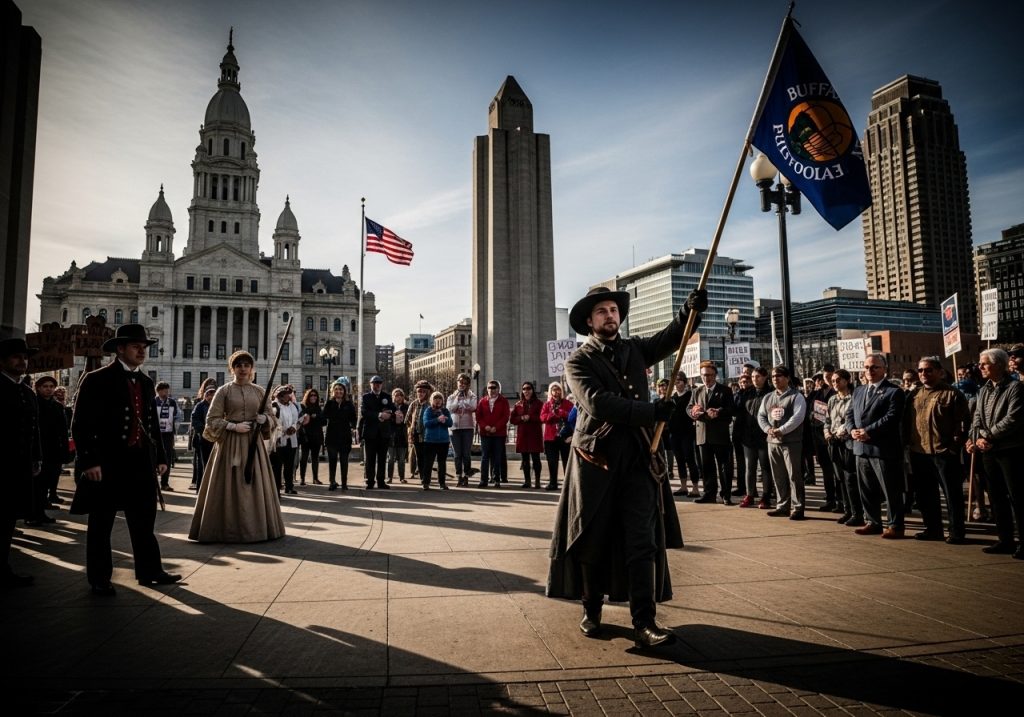
Despite its early success, Buffalo faced significant challenges throughout the 20th century. The decline of the steel industry, suburbanization, and changes in transportation patterns led to population loss and economic downturn. The city struggled with deindustrialization, job losses, and urban decay, especially after World War II.
In recent decades, Buffalo has undergone a remarkable process of revitalization. Efforts to redevelop the waterfront, invest in education and healthcare, and promote cultural tourism have helped restore parts of the city. Buffalo is now recognized for its growing arts scene, historic preservation, and emerging tech industry. The city’s history as a gateway, industrial powerhouse, and resilient community continues to shape its identity today.
Today, Buffalo is celebrated for its rich heritage, architectural beauty, and strong community spirit. From its Native American roots to its role in early American trade, industrial innovation, and civil rights, Buffalo’s history is a tapestry of transformation and perseverance. The city honors its past while looking forward to a dynamic future as a center of culture, innovation, and economic renewal in the Great Lakes region.
Buffalo, located in western New York near the eastern shores of Lake Erie and the head of the Niagara River, has a rich and multifaceted history that spans centuries. The area was originally inhabited by Native American peoples, primarily the Neutral, Erie, and later the Seneca Nation, one of the Six Nations of the Iroquois Confederacy. These indigenous communities thrived on the abundant natural resources, including fertile lands and plentiful waterways, which made the region an important center for trade and settlement long before European arrival.
European exploration began in the early 17th century when French explorers navigated the Great Lakes region. However, it wasn’t until the late 18th century that permanent European settlements took hold. Buffalo’s strategic location near the Niagara River made it a key point for military and trade activity. The area was officially purchased in 1789 by the Holland Land Company, a group of Dutch investors, who began developing the land for settlers.
Buffalo’s transformation from a small village to a booming city began in earnest during the early 19th century. The completion of the Erie Canal in 1825 was pivotal — it connected the Atlantic Ocean, via the Hudson River, to the Great Lakes. This waterway transformed Buffalo into a critical transportation hub, facilitating the flow of goods and people between the Midwest and the East Coast. Buffalo became a gateway for commerce, especially in grain and timber, fostering rapid economic growth.
By the mid-19th century, Buffalo’s population surged as industries such as steel, shipping, and manufacturing flourished. Its proximity to the Niagara Falls also enabled the development of hydroelectric power, further fueling industrial growth. The city became renowned for its grain elevators, which revolutionized the storage and shipment of grain, and was a major stop on the Underground Railroad, aiding escaped slaves on their journey to freedom.
Buffalo’s architectural and cultural landscape blossomed during this era. The city was home to many grand buildings, parks designed by Frederick Law Olmsted, and cultural institutions like the Albright-Knox Art Gallery. By the early 20th century, Buffalo was the eighth-largest city in the United States, thriving on the wealth generated by industry and commerce.
HERE Buffalo strives to provide the finest deals, products, and experiences in your local community. It’s all RIGHT HERE, and it’s all LOCAL.
If you notice something that you believe should be here, please let us know. And you’ll notice it soon HERE!
© Copyright 2025, HERECity.com